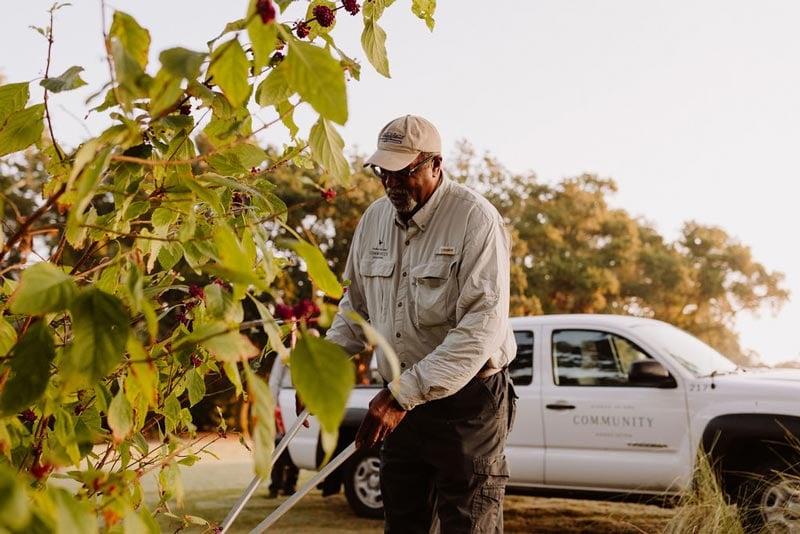Apr
12
2008
From The Blog
South Carolina Coastal Zone Butterflies
This presentation featured Bill McCord, wildlife biologist at the South Carolina Department of Natural Resources, who discussed South Carolina coastal zone butterflies. Bill, an expert on coastal
zone ecology with a special love for butterflies, used various slides of larvae, pupas and butterflies taken by himself as well as his own extensive collection of mounted butterflies, to present on the topic. Bill emphasized that his collections help scientists learn more about butterflies and moths.
Bill explained that many states recognize butterflies as wildlife, since insects are at the bottom of the natural wildlife food chain. South Carolina does not yet do so and is behind the curve in this regard. He explained that there are over 750 species of butterflies in the U.S.; 125 of which can be found in South Carolina, while 250 to 300 species are found in the state of Florida alone. There are also over 10 times as many species of moths in the U.S., but Bill focused the discussion primarily on butterflies that can be seen on Kiawah.
Before getting into details, Bill described the life cycle of butterflies. They all start life as larvae (a.k.a. caterpillars), the stage where all growth occurs as they feed on plants. This stage typically lasts six weeks. Curiously, each type of butterfly seems to concentrate on a particular plant. For example, the Phaon Crescents feed only on Creeping Frog fruit. The larvae then form pupas in which they
live while they develop into butterflies. The pupas are attached to plants by silk, and resembles the leaves of the plant to which they are attached. After the butterflies emerge from the pupas, they typically live only a few weeks.
Bill then showed slides and talked about individual coastal zone butterflies, moving from smallest to largest wingspread. Following are brief descriptions of some of the butterflies Bill presented:
SMALL BUTTERFLIES
(1⁄2” to 2” wingspan) include the tiny Eastern Pygmy Blues that have only a 1⁄2” wingspan. They are hard to find because they are so small. Next, the Grey Hairstreaks, the Red Banded Hairstreaks and Edward’s Hairstreaks have wingspans of 1″. Also in this category, the Skippers, e.g., Brazilian and Silver-spotted, have wingspans of 1 1⁄2” to 2 “; and are a variety of colors, depending on their habitat. Light color butterflies stay in sunny, light areas, while dark colored butterflies stay in wooded habitats.
MEDIUM BUTTERFLIES
(2” to 3” wingspan) include the Crescents (Pearl and Phaon) and the Common Buckeye. The Common Buckeye larvae have spines to keep flies, wasps, etc. from laying eggs on them. Butterfly names are often very descriptive, such as the Mourning Cloak and Red Admiral. The Mourning Cloak’s dark color indicates that it is a woodland butterfly. The Satyrs were the final group Bill described; this category includes the Creole, Pearly Eye and Carolina butterflies.
LARGE BUTTERFLIES
(3 1⁄2” to 6” wingspan) include the Zebra Longwing whose larvae feed on passion flowers, making the larvae poisonous. Sulphur butterflies include the Cloudless, Sleepy Orange, and Little Sulphur varieties. Swallowtails are the largest (ranging 4” to 6 1⁄2”) and are one of the favorite coastal varieties. Types include the Zebra, Black, Spicebush and the Eastern Tiger, which is the South Carolina State butterfly. The 6” Palamedes Swallowtail butterflies are in danger of becoming extinct because the Red Bays that they feed on are dying out. Bill emphasized that coastal butterflies are in trouble because of excessive coastal development and warming temperatures.
As their habitats decline, the butterflies will be in decline as well. He encouraged us to plant butterfly friendly plants on our properties. Contact KINHC at 843-768-2029 for a list of these plants. Bill then discussed the Monarch butterfly in detail. He participates in a U.S. study which tags Monarch butterflies to better understand them and their migration routes. The Monarch is a large butterfly that is unique because of their long migrations in the fall. Most only live about five weeks as adults, but a gene makes those that emerge from the pupa in the fall develop fat, which allows them to live longer so they can migrate southward. The eastern U.S. Monarchs migrate down the east coast to South Carolina and Florida. There is speculation that many continue on further south, perhaps to Cuba, though their final destination is not yet known.
Finally, Bill talked about the differences between butterflies and moths. Moths are active at night. They emerge from cocoons, fly slow to hide from predators and sit with their feathery wings open. Butterflies, on the other hand, are active during the day. They see well and are covered with flat scales on their wings. They fly fast and sit with their wings closed upright. Butterflies are named descriptively based on their coloration and markings when their wings are closed upright. Moths are named descriptively based on their coloration and markings when their wings are open.
The informative session was well attended by members. The next Conservation Matters presentation, to be held in April, will focus on the KINHC tagging studies of Kiawah Bobcats and other Kiawah species. For more information on the series, or on the conservancy.

